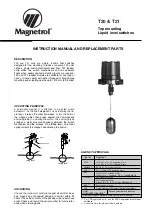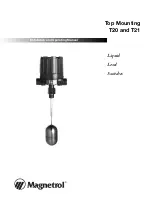
250
C o n f i g u r i n g S w i t c h I n f o r m a t i o n
www
.dell.com | support.dell.com
–
Blocking
—The LAG is currently blocked and cannot be used to forward traffic or
learn MAC addresses.
–
Listening
—The LAG is currently in the listening mode. The LAG cannot forward
traffic or learn MAC addresses.
–
Learning
—The LAG is currently in the learning mode. The LAG cannot forward
traffic; however, it can learn new MAC addresses.
–
Forwarding
—The LAG is currently in the forwarding mode. The LAG can forward
traffic and learn new MAC addresses.
•
Speed
—The speed of the ports comprising the LAG.
•
Path Cost (1-65535)
—Indicates the amount this LAG contributes to the Root Path
Cost. The Path Cost can be adjusted to a higher or lower value and can forward traffic
to or away from a path being rerouted. The path cost has a value of 1 to 65,535.
•
Default Path Cost
—Indicates the default path cost. The default path cost for a LAG
is 4.
•
Priority (0-255)
—Indicates the priority value of the LAG. The Priority value can be
used to influence the LAG choice when a bridge has two looped ports on the same
LAN. The priority value is between 0 -255.
•
Designated Bridge ID
—Indicates the priority and MAC Address for the designated
bridge.
•
Designated Port
—Indicates the priority and MAC Address for the selected port.
•
Designated Cost
—Indicates the Designated Cost.
•
Forward Transitions
—Indicates the number of times the port has changed from the
blocking
state to
forwarding
.
Enabling STP on a LAG:
1
Open the
STP LAG Settings
page.
2
Select
Enable
in the STP field.
3
Define the
Priority
,
Path Cost
, and
Fast Link
fields.
4
Click
Apply Changes
. STP is enabled on the LAG, and the device is updated.
Modifying the LAG STP parameters:
1
Open the
STP LAG Settings
page.
2
Modify the
Priority
,
Path Cost
, and
Fast Link
fields.
















































